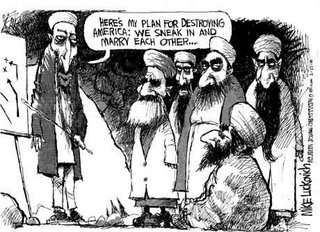Perhaps above all, he valued contact with nature, when all five senses were active at once.We are celebrating completion of 150 years of
Rabindranath Tagore's birth on May 3 2011.
Another 150-year old thing we are celebrating, and Tagore too would have joined in, is
Rani Baug (राणीची बाग)- Mumbai's botanical garden and zoo that was inaugurated in 1861. Read an excellent article on the subject from
Frontline May 2011 here. (Did Tagore ever get to visit it? He travelled a lot.)
I have taken out of our cupboard, one more time, one of the best books on Tagore's life in any language: '
Ravindranath: Teen Vyakhyane' by
P L Deshpande 1980 (रवींद्रनाथ: तीन व्याख्याने, पु. ल. देशपांडे).
TIRTHANKAR ROY wrote in review of Uma Das Gupta's 'Rabindranath Tagore: A Biography' EPW Jan 22 2005:
"Rabindranath Tagore is a difficult subject for a biography.
His artistic creations and thoughts were expressed in forms so diverse that no single book can give a sufficient account of the output.
He was not just a literary figure. He believed in, and tirelessly campaigned for, a vision of moral and material development of India. He translated that vision into practice, in the process expending vast quantities of energy and nearly all his private resource.
Despite the existence of these different planes, artistic-cum-personal and practical-cumcollective, the two planes were firmly integrated in his mind and in the conduct of his life. Capturing the source of this integration is made difficult by the almost complete absence of personal accounts by Rabindranath of his inner mental world, and of the most creative part of his life. He was a lonely person, friendless despite being surrounded by a band of admirers. His creative output was so individual, and the action programme so politically incorrect in his time, that he was more often subject to attacks and misplaced admiration than to genuine understanding.
The measure of an authentic biography of Rabindranath is how well it can capture the common foundation of these different planes, artistic and practical, and at the same time connect these visible worlds with the less visible and frequently misunderstood person.
Major biographies in
English and Bengali, some of them running into several volumes, focus on the historical details at some expense of the bigger picture, or pay more attention to the artistic side..."
I wrote to Mr. Roy this:
"...Indeed Rabindranath Tagore is a difficult subject for a biography. The best work I have seen on the subject is in Marathi - "Ravindranath: Teen Vyakhyane" by the late Pu La Deshpande (August 1981).
Until I read the book, I did not realize how we miss someone like Tagore in Marathi. Pu La's book focuses on "bigger picture". It does "not lose sight of the essential unity between the different planes" in Rabindranath's life. It tries hard to capture the common foundation of these different planes, artistic and practical, and at the same time connect these visible worlds with the less visible and frequently misunderstood person" and all this in a slim volume of 112 pages.
Now I only wish a book like this got written in Marathi on the subject of
Satyajit Ray."
Mr. Roy wrote back to me on March 9 2005:
"...Anyway, I did enjoy your comment, and am very glad (the author of the book will be happy too I am sure) to see the reference to Pu La, which goes on to show that you need one well-rounded personality to write effectively about another. I have seen Pu La in
Santiniketan in the mid-1970s, it is a place he enjoyed visiting. And if I remember right, he came to our house with the actor
Sombhu Mitra, who was a friend of my father's. Your email revived that small but very bright piece of memory..." etc.
Pu La's book touches upon but does not focus all that much on Mr. Roy writes here:
"...Rabindranath, more than any of his significant contemporaries, took the fight for freedom to its logical conclusion in urging that aggressive nationalism was a form of unfreedom, and no better than any other kind of sectarianism...
...Perhaps the most influential link between freedom and moral progress at the time was supplied by
Hindu revivalism.
Hinduism seemed to represent a cultural distinctness that might uphold the sense of a nation. Rabindranath, after briefly and uneasily toying with Hindu pride, firmly rejected it. The religious route to nation and culture, for him, deepened injustices within Indian society, and at the same time, rejected the good with the bad from western culture. Eventually, he rejected the very idea of a nation based on the us-and-them principle, that is, on perceived differentness between peoples. More than half of his life was spent
speaking out passionately against nationalism, and speaking for the idea of unity and cooperation among human beings. He was doing this at a time when nationalism was at its most aggressive run throughout the world, including India..."
Marathi speaking
B G Tilak (बाळ गंगाधर टिळक), probably the most popular leader in India from the beginning of the century until his death in 1920, stood for
Hindu revivalism and aggressive brand of nationalism. Surely, Tagore's relationship with educated
Maharashtra must have been uneasy. (For instance, he never became as popular as
Sharat Chandra Chatterji among Marathi readers.)
Even in today's Maharashtra- where 'nationalism' now comes dressed in forms like
cricket, caste, religion and language- there are far more takers for Tilak than Tagore.
As I thumbed through Pu La's book I came across this line of Tagore:
'बकुलगन्धे बन्या एलो दखिन हावाय स्त्रोते' (As southerly started blowing, fragrance of Bakul flooded)
And I remembered how integral Bakul once was to my life. Bakul tree was just few meters away from our house in
Miraj. We often gathered its flowers from the ground that was quite dirty at times for our mother's and sister's garlands (गजरा). If I try I can still smell its mild fragrance...
And when did I last hold and smell a Bakul flower?
(Bakul- Common name: Spanish cherry Botanical name: Mimusops elengi)
I can write about many things I learnt reading Pu La's book but the most important was how Rabindranath made learning Bengali so interesting for kids. I envy those who start formally learning their mother tongue with the help of Rabindranath. (I remember those dreadful Marathi lessons like: कमल हरण बघ, कमल नमन कर...etc from Std I).I had also written to Pu La about his book. I said how I should have read it before I went to live in
Assam and Bengal c1989-92. If I had, I would have appreciated a lot of things there better.
This is
Pu La's reply dated Sept 21 1992:

पु ल देशपांडे पुणे ४
प्रिय अनिरुद्ध, 21.9.92
तुमचे पत्र मिळाले. इतक्या रसिकतेने माझ्या लेखनाला 'दाद' दिल्याबद्दल मनःपूर्वक धन्यवाद. वास्तविक तुमच्या पत्राला सविस्तर उत्तर पाठवायला हवे होते. परंतु कंपवातामुळे लेखन ही एक अत्यंत कष्टदायक गोष्ट झाली आहे. अक्षर कसे होते ते पाहत आहाच. तेव्हा तुम्हाला ते वाचण्याचा अधिक त्रास न देता पुन्हा एकदा मनापासून आभार मानतो.
सही
पु ल देशपांडे
 SCHLEICHERA OLEOSA / kusum
SCHLEICHERA OLEOSA / kusum located at
Rani Baug, Mumbai (courtesy:
SHUBHADA NIKHARGE and Frontline May 20 2011)
Frontline article says: An uncertain future awaits Mumbai's 150-year-old botanical garden with rare and endangered tree species.
Let us save it for our own future and in the name of Rabindranath Tagore, a passionate lover of gardens.

















